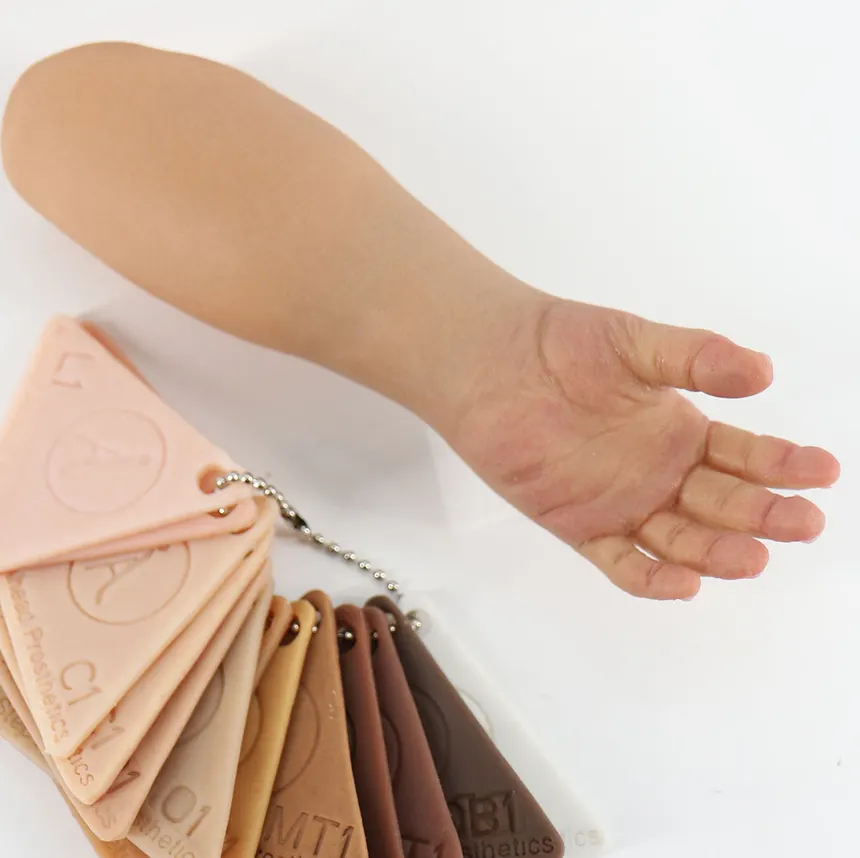A Major Leap in Prosthetic Technology
In a groundbreaking development, researchers have successfully created the world’s first self-healing electronic skin (e-skin) designed specifically for prosthetics and robotic applications. This innovative technology, which mimics the functionality of human skin, has the potential to revolutionize prosthetic limbs by enhancing sensitivity, durability, and self-repairing capabilities.

What Is Electronic Skin (E-Skin)?
E-skin is a flexible, stretchable, and self-repairing material that integrates advanced sensors and electronic components to replicate the sensory functions of real skin. Scientists have been working on e-skin for years, but this latest version is the first to incorporate self-healing properties, allowing it to repair itself after damage, much like human skin.
Key Features of the Self-Healing Electronic Skin
- Self-Healing Ability: The e-skin can automatically repair itself when torn or damaged, increasing durability and lifespan.
- High Sensitivity: It can detect temperature, pressure, and touch, making prosthetic limbs more lifelike.
- Eco-Friendly Material: The materials used are biodegradable and recyclable, reducing environmental waste.
- Flexibility and Stretchability: The skin can bend and stretch, allowing for natural movement.
- Advanced Conductive Properties: Ensures seamless transmission of electrical signals, improving prosthetic control.
- Water and Chemical Resistance: The self-healing e-skin remains functional even after exposure to moisture and certain chemicals.

How Does the Self-Healing Mechanism Work?
Scientists have engineered the e-skin using a combination of specialized polymers, nanomaterials, and conductive layers. The self-healing process involves:
- Chemical Bond Repair: When the e-skin is cut or torn, molecular bonds reform naturally within minutes to hours, restoring functionality.
- Heat Activation: In some cases, mild heat exposure speeds up the healing process.
- Recyclable Components: Damaged parts can be broken down and reused, ensuring sustainable use.
- Multi-Layered Design: The e-skin consists of multiple layers that work together, enhancing strength and efficiency.
Benefits for Prosthetic Users
- Enhanced Realism: Prosthetic users can experience natural touch sensations, making artificial limbs feel more like real ones.
- Reduced Maintenance Costs: Since the e-skin repairs itself, users won’t need frequent expensive replacements.
- Greater Comfort: The flexibility ensures a better fit and movement.
- Longer Lifespan: Self-repairing features reduce wear and tear, extending the durability of prosthetics.
- Improved Dexterity: The e-skin’s sensitivity allows for precise movements, benefiting users in daily activities.

Potential Applications Beyond Prosthetics
While the primary focus is on prosthetic limbs, the self-healing e-skin can also be applied to:
- Robotics: Creating lifelike robots with tactile sensitivity.
- Wearable Technology: Smart gloves and other devices for health monitoring.
- Healthcare Monitoring: Skin patches that detect vital signs and injuries.
- Space Exploration: Enhancing astronaut suits for extreme conditions.
- Smart Fabrics: Future clothing embedded with sensing and self-healing capabilities.
Challenges and Future Research
Despite its promise, the technology still faces hurdles, such as:
- Scalability Issues: Mass production is challenging and expensive.
- Durability Under Extreme Conditions: Further testing is needed for extreme temperatures and pressure.
- Integration with Nerve Systems: Researchers aim to connect the e-skin with neural pathways for even more realistic sensory feedback.
- Affordability: Efforts are required to reduce costs and make the technology widely accessible.
- Energy Efficiency: Scientists are exploring ways to ensure the e-skin operates with minimal energy consumption.

Conclusion: A Step Towards the Future of Prosthetics
The development of self-healing electronic skin marks a historic breakthrough in medical technology. As research continues, this innovation could lead to smarter, more lifelike prosthetics, improving the quality of life for millions of amputees and individuals with disabilities. With further advancements, bionic limbs with near-human capabilities may soon become a reality. The fusion of biotechnology, AI, and nanotechnology in prosthetics is paving the way for a future where artificial limbs are nearly indistinguishable from biological ones.
California’s Worst Drought in History Sparks Drastic Water Restrictions—What You Need to Know!






